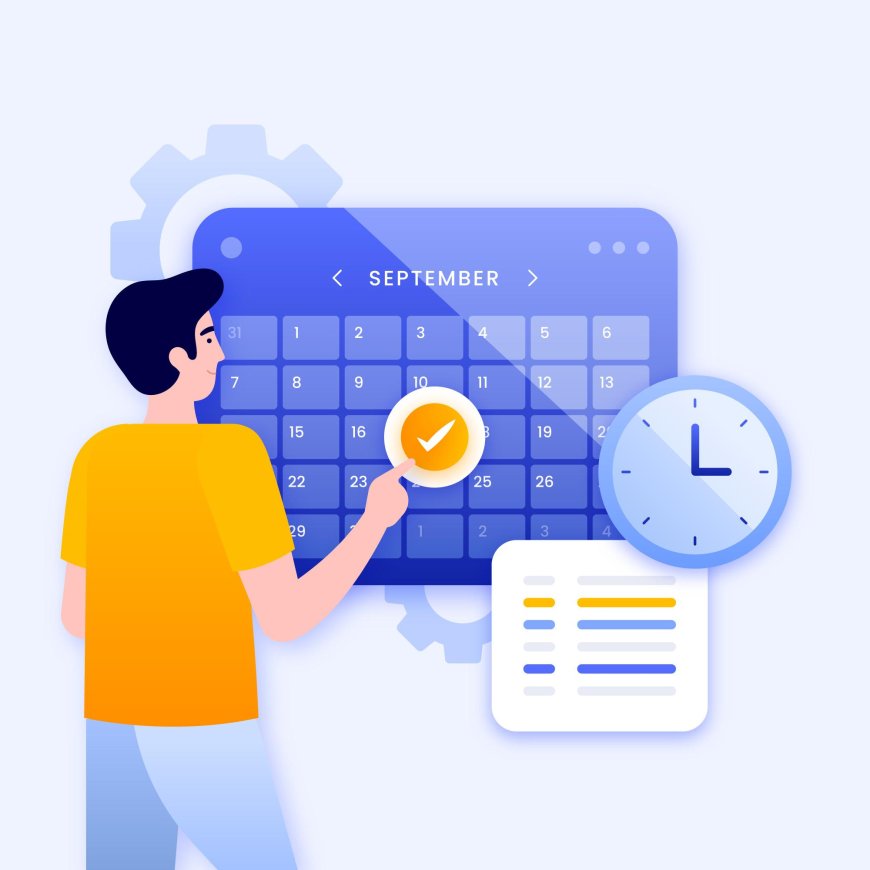The Evolution of Timesheets: From Paper to Digital Platforms
Discover how timesheets have evolved from paper-based tracking to advanced digital platforms. Learn what a timesheet is and how timesheet management software improves productivity, accuracy, and remote work.

Time is one of the most valuable resources in any organization. Tracking how it's spent has always been crucial for payroll, productivity, project management, and profitability. The humble timesheet once a simple piece of paper has undergone a massive transformation over the decades. Timesheet management software plays a central role in how businesses operate, especially in a digital and increasingly remote work environment.
This article explores the history of timesheets, the transition to digital platforms, and how modern software has revolutionized time tracking for teams and organizations.
What Is a Timesheet?
Before diving into solutions, it's important to understand the basics. What is timesheet, and why does it matter?
A timesheet is a record used to track the amount of time an employee or contractor spends working on specific tasks, projects, or jobs. Originally developed to help calculate payroll, timesheets now serve many broader purposes:
-
Monitoring project budgets
-
Tracking employee productivity
-
Ensuring compliance with labor laws
-
Analyzing how time is allocated across tasks or departments
In its simplest form, a timesheet might be a handwritten chart or spreadsheet. In more advanced settings, it becomes part of an integrated digital system tied to HR, billing, project management, and analytics platforms.
Stage 1: The Era of Paper Timesheets
In the early days of business and industry, time tracking was done manually on paper. Employees would log their start and end times on a daily or weekly form. Managers would then review, approve, and pass these logs to payroll teams for processing.
Challenges of paper timesheets:
-
High risk of human error (missed entries, math mistakes)
-
Time-consuming approval and processing
-
Limited accessibility and sharing
-
Easy to falsify or manipulate
Despite these drawbacks, paper timesheets remained common well into the 20th century, especially in small and medium-sized businesses.
Stage 2: Mechanical Time Clocks and Punch Cards
With the rise of manufacturing and shift-based work, punch card systems became popular. These time clocks would stamp the exact time an employee began or ended their shift.
Advantages:
-
More standardized and objective than handwritten logs
-
Easier to calculate hours worked
Drawbacks:
-
Still manual in nature cards had to be collected and reviewed
-
No visibility into what employees were doing during their hours
-
Couldnt track tasks or projects, only raw hours
Punch clocks were a step forward in automation but still limited in their scope.
Stage 3: The Shift to Digital Timesheets
With the spread of computers in offices during the 1980s and 1990s, digital spreadsheets (like Excel) became a common method for time tracking. Custom templates allowed employees to input hours and tasks, with formulas to calculate totals.
Soon after, desktop-based time tracking software emerged, offering more advanced features like:
-
Pre-built timesheet templates
-
Basic reporting and analytics
-
Role-based approvals
But these systems had limitations:
-
Data was often siloed on individual computers or local servers
-
Difficult for remote or traveling workers to access
-
Integration with payroll or project tools was minimal
Stage 4: Cloud-Based Timesheet Management Software
Today, the most advanced form of time tracking comes in the form of cloud-based timesheet management software. These platforms are designed for modern workflows, remote teams, and real-time business needs.
Key features include:
-
Real-time time tracking: Track time live or enter hours manually across multiple devices.
-
Mobile access: Employees can clock in or log hours from smartphones, tablets, or web browsers.
-
Project and task linking: Track time against specific clients, projects, or billable tasks.
-
Automated reminders and approvals: Nudges employees to submit on time, and enables digital approvals.
-
Payroll and invoicing integration: Seamlessly connect with systems like QuickBooks, ADP, or Xero.
-
Analytics and reporting: Visual dashboards to identify trends, track utilization, and forecast project costs.
Some leading tools in this space include Time Champ, Toggl Track, Clockify, Harvest, QuickBooks Time, Replicon, and Hubstaff.
Why This Evolution Matters
The move from paper to digital isnt just about convenience. It reflects a broader shift in how businesses think about efficiency, accountability, and data-driven decision-making.
1. Increased Accuracy
Automated time tracking reduces errors and improves data integrity. It prevents common issues like rounding errors, illegible handwriting, or forgotten entries.
2. Improved Productivity
Managers can see how teams spend their time and identify bottlenecks. Employees can also become more aware of their work habits, leading to improved time management.
3. Better Project and Budget Management
By tying hours to tasks and projects, teams can see whether theyre on track not just in terms of time, but also in terms of cost.
4. Remote Work Enablement
Hybrid and remote-first world, cloud-based timesheet software ensures all employees can track time, regardless of location or device.
5. Compliance and Transparency
Accurate records help businesses stay compliant with labor laws, overtime rules, and contract obligations. It also builds trust with clients and employees.
The Future of Timesheet Management
Looking ahead, were seeing even more innovation in time tracking, such as:
-
AI-powered suggestions for time entries based on calendar and email activity
-
Automated timesheets generated from app usage and location data
-
Voice-activated logging and wearable time trackers
-
Deeper integration with collaboration platforms like Slack, Teams, and Asana
The future of timesheets is smart, seamless, and deeply integrated into how we work.
Conclusion
Timesheets have come a long way from scribbled notes to sophisticated digital tools that power modern workforce management. What began as a payroll tool has evolved into a strategic asset that helps organizations increase productivity, manage costs, and make smarter decisions.
Whether youre running a small business or managing global teams, investing in reliable timesheet management software is no longer optional, it's a competitive necessity.






































